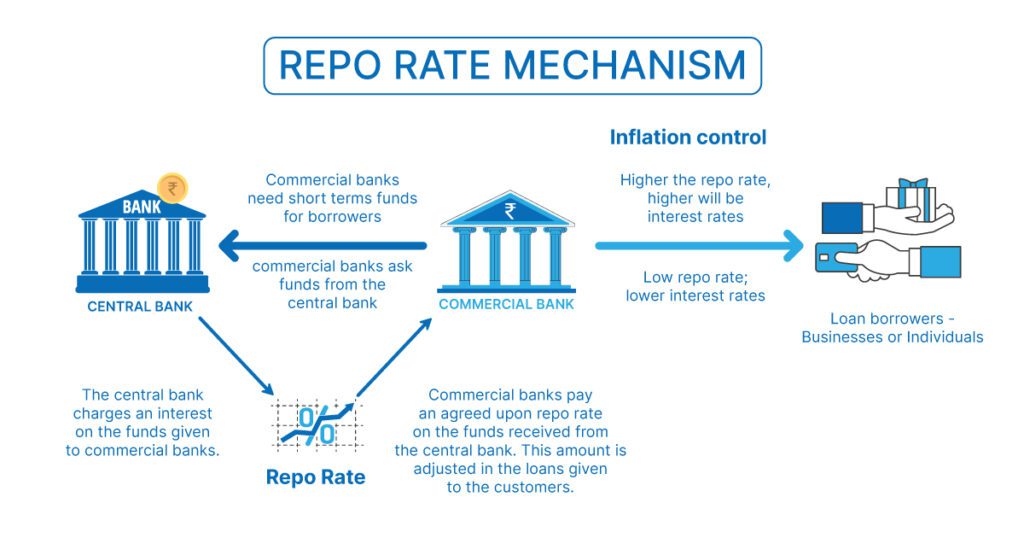
In the world of finance, the repo rate plays a crucial role in determining loan interest rates. Whether you have a home loan, personal loan, or any other type of loan, understanding the repo rate and its impact on your loan can help you make better financial decisions.
What is the Repo Rate?
The repo rate, or repurchase rate, is the rate at which the central bank of a country (in India, it’s the Reserve Bank of India or RBI) lends money to commercial banks. This rate influences the interest rates that banks charge their customers for loans. When the central bank adjusts the repo rate, it can either increase or decrease the cost of borrowing money for banks, which is then passed on to consumers.

Credit: https://www.shiksha.com/online-courses/articles/repo-rate/
How Repo Rate Changes Affect Loans:
- Home Loans: When the repo rate decreases, banks typically lower the interest rates on home loans. This means lower EMIs (Equated Monthly Installments) for borrowers. Conversely, when the repo rate increases, home loan interest rates generally rise, making EMIs more expensive.
- Personal Loans: Similar to home loans, personal loan interest rates are affected by changes in the repo rate. A decrease in the repo rate can lead to lower personal loan interest rates, making borrowing more affordable. On the other hand, an increase in the repo rate can make personal loans more expensive.
- Auto Loans: Auto loan interest rates also fluctuate with changes in the repo rate. Borrowers may find it cheaper to finance a vehicle purchase when the repo rate is low and more expensive when the rate is high.
- Business Loans: Businesses rely heavily on loans for expansion and operational needs. A lower repo rate can reduce the cost of business loans, promoting investment and growth. An increased repo rate can make business borrowing more costly, potentially slowing down business expansion plans.
Understanding the Relationship Between Repo Rate and Inflation:
The central bank adjusts the repo rate to control inflation and stabilize the economy. When inflation is high, the central bank may increase the repo rate to make borrowing more expensive, thereby reducing spending and slowing down inflation. Conversely, when the economy is sluggish, the central bank may lower the repo rate to encourage borrowing and spending, stimulating economic growth.
How to Stay Informed:
Staying updated on repo rate changes is crucial for managing your loans effectively. Here are a few tips:
- Follow Central Bank Announcements: Keep an eye on announcements from the central bank regarding repo rate changes.
- Monitor Loan Interest Rates: Regularly check the interest rates on your loans and compare them with market rates.
- Consult Financial Advisors: Seek advice from financial experts to understand how repo rate changes impact your specific loan portfolio.
Conclusion:
Repo rate changes have a significant impact on the interest rates of various loans. By understanding this relationship, you can better manage your loans and make informed financial decisions. If you’re looking for expert advice on managing your loans, contact Credit Consultancy. We’re here to help you navigate the complexities of loan management and ensure you get the best rates possible.






